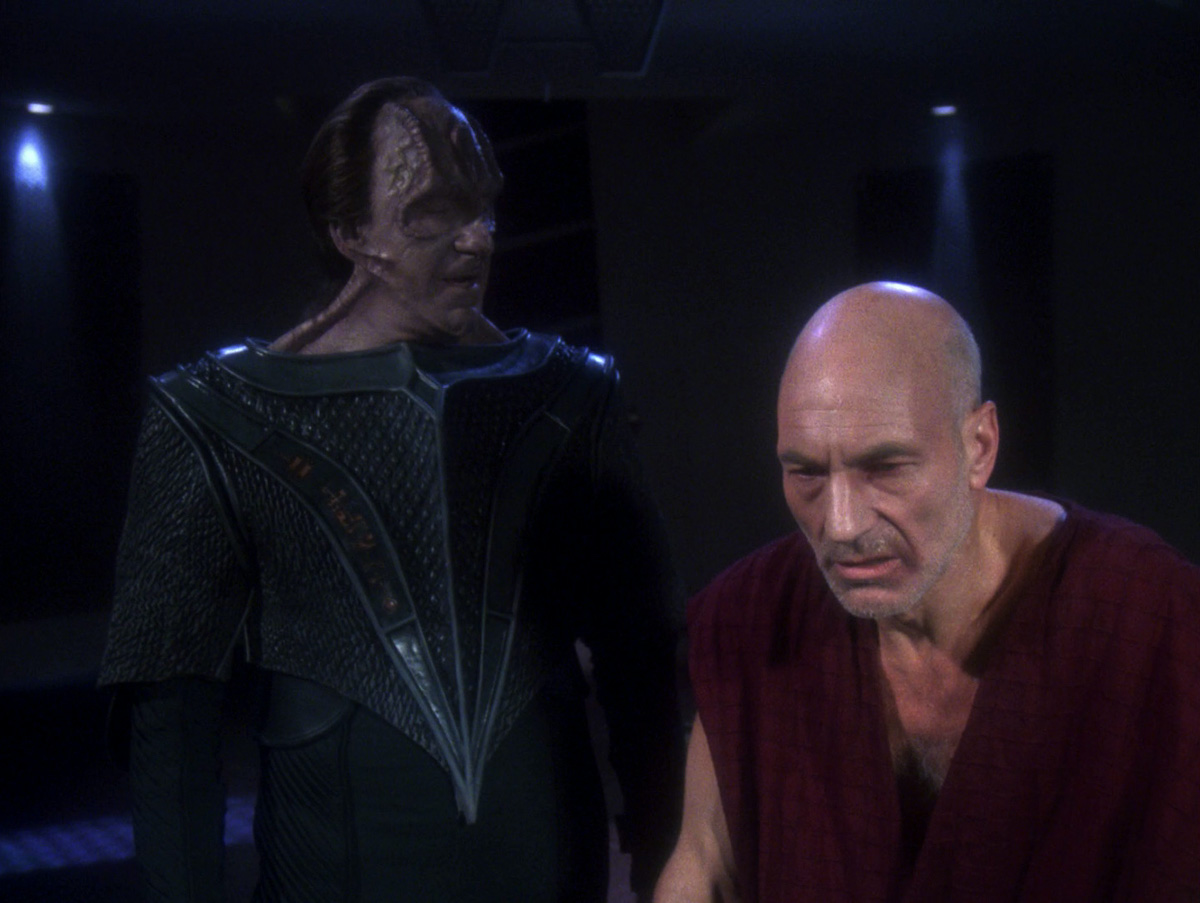“THERE! – ARE! – FOUR!! – LIGHTS!!!”
The history of Cardassia, some of it anyway, is laid out in miniature over the course of Gul Madred’s torture sessions with Captain Picard in Part II of “Chain of Command.” We learn that it was a civilization of deep history and art, that fell to poverty and despair before ultimately being taken over by its military to dig its way away from the brink of self-destruction. The pre-war Germany vibe is strong, and a lot of the groundwork laid here carries nicely onto Star Trek: Deep Space Nine.
Part II of “Chain of Command” is about as good as Part I, with the points of interest reversed. This time, it’s the stuff aboard the Enterprise that feels somewhat lackluster, while the sequences with Picard are – rightfully so – some of the more celebrated in Star Trek history. There are four or five torture sequences between Madred and Picard throughout the episode, and each one is a nicely composed scene study, each taking a different tack. In one, they exchange careful pleasantries in what is almost an intentional caricature of a Next Gen “diplomacy” scene. In another, Madred coos over his school-age child while Picard lies insensate behind them. There’s a humid exchange involving a “delicacy” Cardassian egg that looks like it has a giant living mollusk inside it. And, of course, there are the lights.
David Warner makes a splendid guest star as Gul Madred, putting deep feet in the wet cement of the Cardassian persona in this, his only appearance in the role. Though they hadn’t been invented yet, I presume Madred is a member of the Obsidian Order, and Warner’s performance anticipates some of the great Cardassian villains (and quasi-villains) to come on Deep Space Nine: Gul Dukat, Enabran Tain, and, of course, Garak.
The only flaw in the episode comes in the fourth torture sequence, where the script falls to the temptation to give Picard a kind of moral victory over Madred (even though the episode will conclude, later, with the same thing – when Picard refuses to acknowledge Madred’s fictional fifth light). The scene in question turns sour quickly, when Madred admits to having been a bullied street kid; the cool Cardassian interrogator then immediately loses his shit when Picard begins to pick away at him, and the mystique of the character is lost. The beat is unnecessary, and dulls Picard’s (admittedly Pyrrhic) victory later.
Back on the Enterprise, there is evidence of the same clunkiness in the screenwriting, as Captain Jellico is forced to bow to Riker’s awesomeness because he needs some fancy shuttle piloting. Geordi telling Jellico that Riker is the best pilot on the ship rings particularly false, given that Geordi himself piloted the Enterprise for the whole first season. It all seems contrived, and it robs Jellico of the unflappable skill that made him so much fun in Part I. The episode’s still a standout, but it could have been better. And it remains a modest shame that we never saw either of these guest stars again.

Blogging The Next Generation runs every Tuesday as I work my way through the episodes of Star Trek: The Next Generation on blu-ray. Season Six is in stores. Season Seven will conclude the blog in early 2015 – you can pre-order the final season now.
